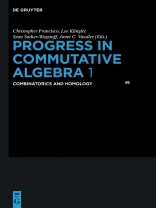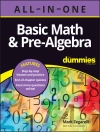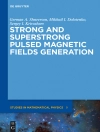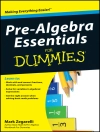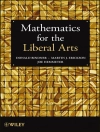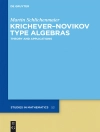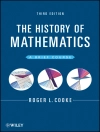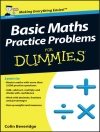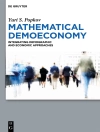This is the first of two volumes of a state-of-the-art survey article collection which originates from three commutative algebra sessions at the 2009 Fall Southeastern American Mathematical Society Meeting at Florida Atlantic University. The articles reach into diverse areas of commutative algebra and build a bridge between Noetherian and non-Noetherian commutative algebra. These volumes present current trends in two of the most active areas of commutative algebra: non-noetherian rings (factorization, ideal theory, integrality), and noetherian rings (the local theory, graded situation, and interactions with combinatorics and geometry).
This volume contains combinatorial and homological surveys. The combinatorial papers document some of the increasing focus in commutative algebra recently on the interaction between algebra and combinatorics. Specifically, one can use combinatorial techniques to investigate resolutions and other algebraic structures as with the papers of Fløystad on Boij-Söderburg theory, of Geramita, Harbourne and Migliore, and of Cooper on Hilbert functions, of Clark on minimal poset resolutions and of Mermin on simplicial resolutions. One can also utilize algebraic invariants to understand combinatorial structures like graphs, hypergraphs, and simplicial complexes such as in the paper of Morey and Villarreal on edge ideals.
Homological techniques have become indispensable tools for the study of noetherian rings. These ideas have yielded amazing levels of interaction with other fields like algebraic topology (via differential graded techniques as well as the foundations of homological algebra), analysis (via the study of D-modules), and combinatorics (as described in the previous paragraph). The homological articles the editors have included in this volume relate mostly to how homological techniques help us better understand rings and singularities both noetherian and non-noetherian such as in the papers by Roberts, Yao, Hummel and Leuschke.
Зміст
Preface
1 Boij-Soederberg Theory: Introduction and Survey
Gunnar Fløystad
1.1 Introduction
1.2 The Boij-Söderberg Conjectures
1.2.1 Resolutions and Betti Diagrams
1.2.2 The Positive Cone of Betti Diagrams
1.2.3 Herzog-Kühl Equations
1.2.4 Pure Resolutions
1.2.5 Linear Combinations of Pure Diagrams
1.2.6 The Boij-Söderberg Conjectures
1.2.7 Algorithmic Interpretation
1.2.8 Geometric Interpretation
1.3 The Exterior Facets of the Boij-Söderberg Fan and their Supporting Hyperplanes
1.3.1 The Exterior Facets
1.3.2 The Supporting Hyperplanes
1.3.3 Pairings of vector Bundles and Resolutions
1.4 The Existence of Pure Free Resolutions and of Vector Bundles with Supernatural Cohomology
1.4.1 The Equivariant Pure Free Resolution
1.4.2 Equivariant Supernatural Bundles
1.4.3 Characteristic Free Supernatural Bundles
1.4.4 The Characteristic Free Pure Resolution
1.4.5 Pure Resolutions Constructed from Generic Matrices
1.5 Cohomology of Vector Bundles on Projective Spaces
1.5.1 Cohomology Tables
1.5.2 The Fan of Cohomology Tables of Vector Bundles
1.5.3 Facet Equations
1.6 Extensions to Non-Cohen-Macaulay Modules and to Coherent Sheaves
1.6.1 Betti Diagrams of Graded Modules in General
1.6.2 Cohomology of Coherent Sheaves
1.7 Further Topics
1.7.1 The Semigroup of Betti Diagrams of Modules
1.7.2 Variants on the Grading
1.7.3 Poset Structures
1.7.4 Computer Packages
1.7.5 Three Basic Problems
2 Hilbert Functions of Fat Point Subschemes of the Plane: the Two-fold Way
Anthony V. Geramita, Brian Harbourne, and Juan Migliore
2.1 Introduction
2.2 Approach I: Nine Double Points
2.3 Approach I: Points on Cubics
2.4 Approach II: Points on Cubics
3 Edge Ideals: Algebraic and Combinatorial Properties
Susan Morey and Rafael H. Villarreal
3.1 Introduction
3.2 Algebraic and Combinatorial Properties of Edge Ideals
3.3 Invariants of Edge Ideals: Regularity, Projective Dimension, Depth
3.4 Stability of Associated Primes
4 Three Simplicial Resolutions
Jeff Mermin
4.1 Introduction
4.2 Background and Notation
4.2.1 Algebra
4.2.2 Combinatorics
4.3 The Taylor Resolution
4.4 Simplicial Resolutions
4.5 The Scarf Complex
4.6 The Lyubeznik Resolutions
4.7 Intersections
4.8 Questions
5 A Minimal Poset Resolution of Stable Ideals
Timothy B. P. Clark
5.1 Introduction
5.2 Poset Resolutions and Stable Ideals
5.3 The Shallability of PN
5.4 The Topology of PN and Properties of D(PN)
5.5 Proof of Theorem 2.4
5.6 A Minimal Cellular Resolution of R/N
6 Subsets of Complete Intersections and the EGH Conjecture
Susan M. Cooper
6.1 Introduction
6.2 Preliminary Definitions and Results
6.2.1 The Eisenbud-Green-Harris Conjecture and Complete Intersections
6.3 Rectangular Complete Intersections
6.4 Some Key Tools
6.4.1 Pairs of Hilbert Functions and Maximal Growth
6.4.2 Ideals Containing Regular Sequences
6.5 Subsets of Complete Intersections in P2
6.6 Subsets of C.I.(2, d2, d3) with d2 = d3
6.7 Subsets of C.I.(3, d2, d3) with d3 = d2
6.8 An Application: The Cayley-Bacharach Property
7 The Homological Conjectures
Paul C. Roberts
7.1 Introduction
7.2 The Serre Multiplicity Conjectures
7.2.1 The Vanishing Conjecture
7.2.2 Gabber’s Proof of the Nonnegativity Conjecture
7.2.3 The Positivity Conjecture
7.3 The Peskine-Szpiro Intersection Conjecture
7.3.1 Hochester’s Metatheorem
7.4 Generalizations of the Multiplicity Conjectures
7.4.1 The Graded Case
7.4.2 The Generalized Rigidity Conjecture
7.5 The Monomial, Direct Summand, and Canonical Element Conjectures
7.6 Cohen-Macaulay Modules and Algebras
7.6.1 Weakly Functorial Big Cohen-Macaulay Algebras
7.7 The Syzygy Conjecture and the Improved New Intersection Conjecture
7.8 Tight Closure Theory
7.9 The Strong Direct Summand Conjecture
7.10 Almost Cohen-Macaulay Algebras
7.11 A Summary of Open Questions
7.11.1 The Serre Positivity Conjecture
7.11.2 Partial Euler Characteristics
7.11.3 Strong Multiplicity Conjectures
7.11.4 Cohen-Macaulay Modules and Related Conjectures
7.11.5 Almost Cohen-Macaulay Algebras
8 The Compatibility, Independence, and Linear Growth Properties
Yongwei Yao
8.1 Introduction
8.2 Primary Decomposition
8.3 Compatibility of Primary Components
8.4 Maximal Primary Components, Independence
8.5 Linear Growth of Primary Components
8.6 Linear growth of {?Tor?_c^R (?(M/(I^m M )), ?(N/(J^n N)))}
8.7 Secondary Representation
8.8 Compatibility of Secondary Components
8.9 Applying a Result of Sharp on Artinian Modules
8.10 Independence
8.11 Minimal Secondary Components
8.12 Linear Growth of Secondary Components
9 Recent Progress in Coherent Rings: A Homological Perspective
Livia Hummel
9.1 Introduction
9.2 Coherent Rings and Grade
9.2.1 Coherent Rings and ?(FP)?_?^R Modules
9.2.2 Non-Noetherian Grade
9.3 Cohen-Macaulay Rings
9.4 Gorenstein Dimensions and the Auslander-Bridger Property
9.4.1 Gorenstein Dimenstions
9.4.2 The Auslander-Bridger Formula
9.5 Gorenstein Rings and Injective Dimensions
9.6 Foundations for Coherent Complete Intersections
10 Non-commutative Crepant Resolutions: Scenes from Categorical Geometry
Graham J. Leuschke
10.1 Introduction
10.2 Morita Equivalence
10.3 (Quasi)coherent Sheaves
10.4 Derived Categories of Modules
10.5 Derived Categories of Sheaves
10.6 Example: Tilting on Projective Space
10.7 The Non-existence of Non-commutative Spaces
10.8 Resolutions of Singularities
10.9 The Minimal Model Program
10.10. Categorical Desingularizations
10.11 Example: the Mc Kay Correspondence
10.12 Non-commutative Crepant Resolutions
10.13 Example: Normalization
10.14 MCM Endomorphism Rings
10.15 Global Dimension of Endomorphism Rings
10.16 Rational Singularities
10.17 Examples: Finite Representation Type
10.18 Example: the Generic Determinant
10.19 Non-commutative Blowups
10.20 Omissions and Open Questions
Про автора
Christopher Francisco, Oklahoma State University, Stillwater, Oklahoma, USA; Lee C. Klingler, Florida Atlantic University, Boca Raton, Florida, USA; Sean M. Sather-Wagstaff, North Dakota State University, Fargo, North Dakota, USA; Janet Vassilev, University of New Mexico, Albuquerque, New Mexico, USA.
